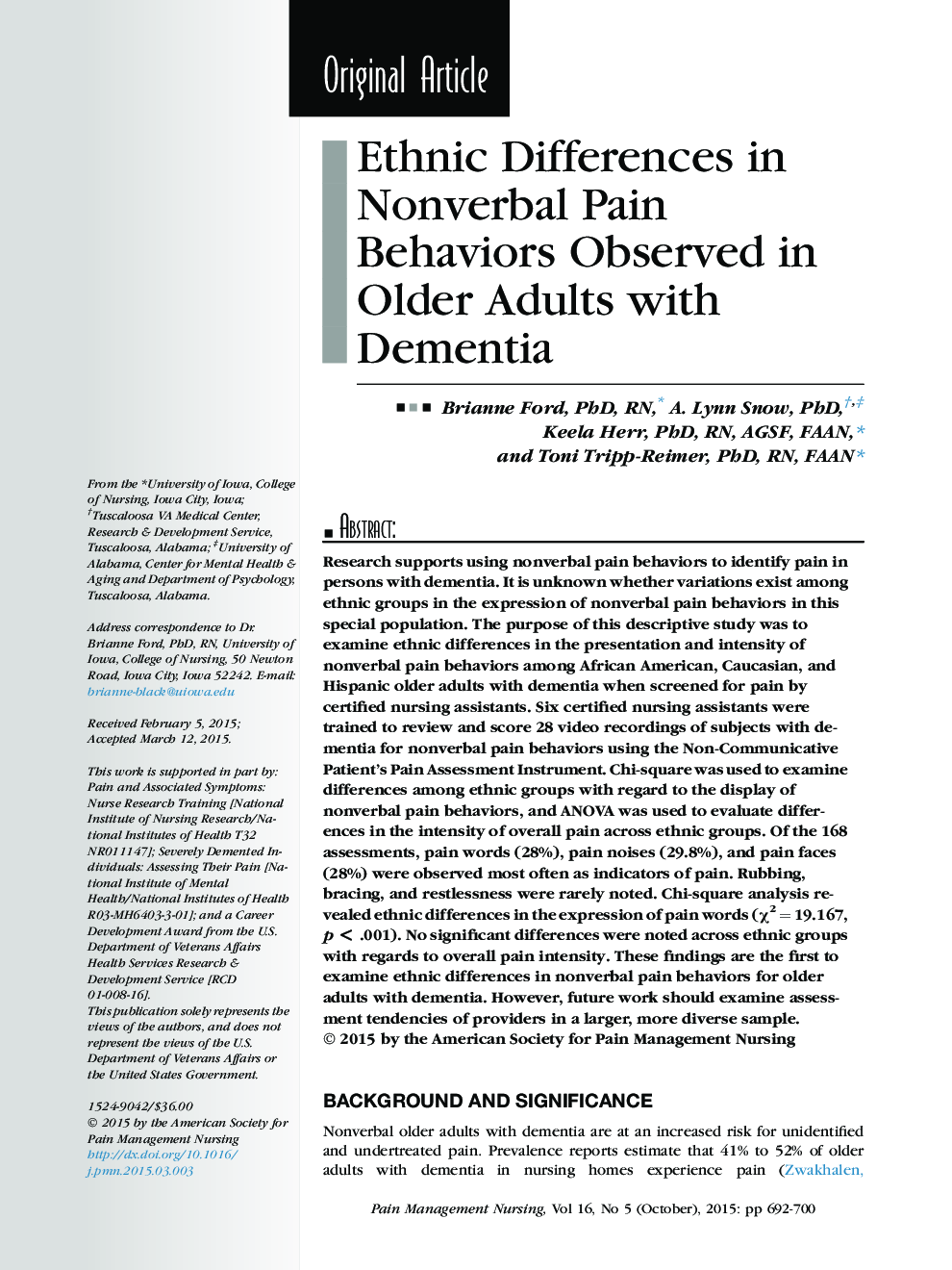| Article ID | Journal | Published Year | Pages | File Type |
|---|---|---|---|---|
| 2677086 | Pain Management Nursing | 2015 | 9 Pages |
Research supports using nonverbal pain behaviors to identify pain in persons with dementia. It is unknown whether variations exist among ethnic groups in the expression of nonverbal pain behaviors in this special population. The purpose of this descriptive study was to examine ethnic differences in the presentation and intensity of nonverbal pain behaviors among African American, Caucasian, and Hispanic older adults with dementia when screened for pain by certified nursing assistants. Six certified nursing assistants were trained to review and score 28 video recordings of subjects with dementia for nonverbal pain behaviors using the Non-Communicative Patient's Pain Assessment Instrument. Chi-square was used to examine differences among ethnic groups with regard to the display of nonverbal pain behaviors, and ANOVA was used to evaluate differences in the intensity of overall pain across ethnic groups. Of the 168 assessments, pain words (28%), pain noises (29.8%), and pain faces (28%) were observed most often as indicators of pain. Rubbing, bracing, and restlessness were rarely noted. Chi-square analysis revealed ethnic differences in the expression of pain words (χ2 = 19.167, p < .001). No significant differences were noted across ethnic groups with regards to overall pain intensity. These findings are the first to examine ethnic differences in nonverbal pain behaviors for older adults with dementia. However, future work should examine assessment tendencies of providers in a larger, more diverse sample.
